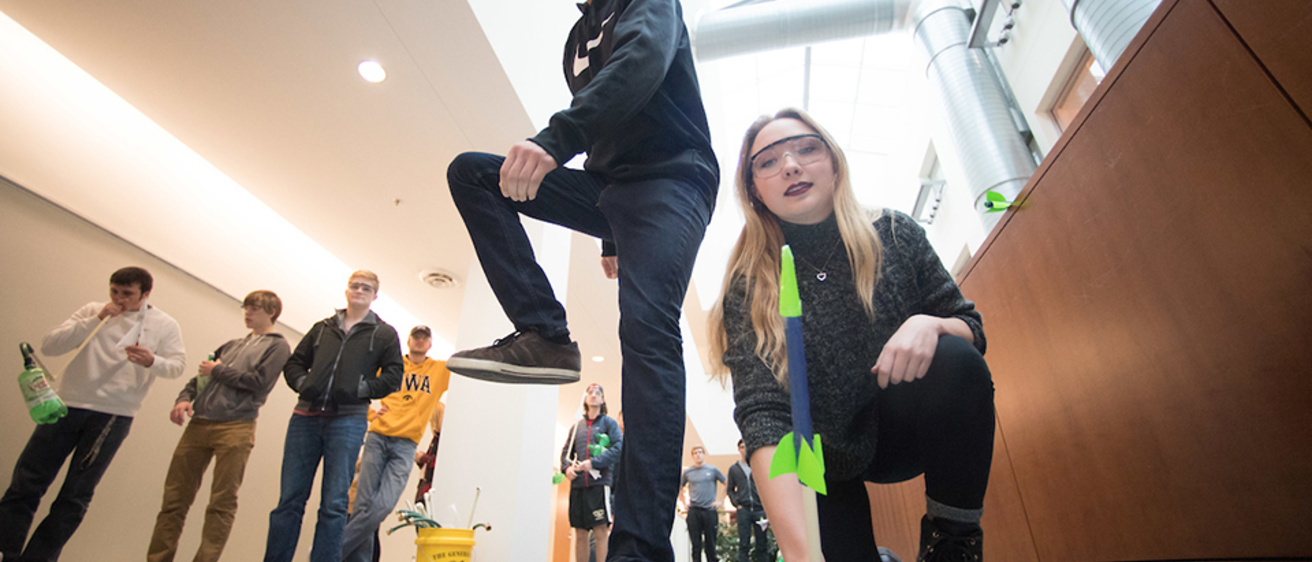In University of Iowa professor David Wilder’s first-year engineering class, students use problem-solving skills to launch homemade rockets, as well as their college careers.
After working for 10 days to design and test their rockets, student teams of three launched their rockets Oct. 26 in the Seamans Center, using PVC pipe and an empty soda bottle. Their goal was to land the rockets in a five-gallon bucket on the floor above them within a two-minute time period—a mission accomplished only once in the three years students have been given the assignment.
Because students couldn’t see the bucket from the launch site, one team member stood near the target to direct the aim and launch. The other teammates worked at the launch site, one holding and aiming the PVC pipe on which the rocket was mounted, the other stomping on the empty two-liter bottle to force air through the pipe and propel the rocket.
Most rockets were made from materials such as paper, cardboard, foil, and tape.
Wilder, a professor of biomedical engineering, says the Engineering Problem Solving–I course introduces first-year engineering students to types of open-ended problems and the creative thinking they will need to solve them in their future jobs as engineers.
“The class is fun and collaborative,” Wilder says. “It’s designed to motivate students and help them understand the importance of the rest of the engineering curriculum, as it will teach them additional skills to solve problems.”
Though this year’s rockets have yet to land in the bucket, Mitchell Carlson, a first-year biomedical engineering major from the Twin Cities area in Minnesota, says he was pleased with how his team’s rocket performed.
Carlson says he didn’t expect the rockets to fly as far as they did.
“Our first one hit the ceiling,” he says.
Carlson says his team tried a couple of different designs before settling on a cardboard tube with a paper nosecone and fins to give the rocket enough weight to slow it down.
Emeleeta Paintsil, a first-year biomedical engineering major from Burr Ridge, Illinois, says she was surprised by how much trial and error the rockets required. Even the smallest change sometimes meant redesigning the rocket with new materials, she says.
Paintsil says the course has been a fun challenge that has her looking forward to her future engineering classes.
“We didn’t do anything like this at my high school,” she says. “It’s great.”
